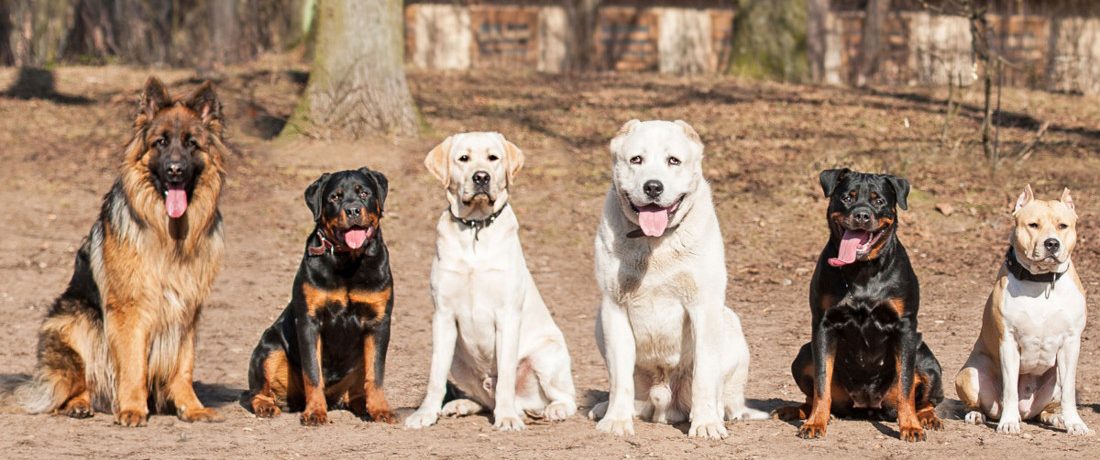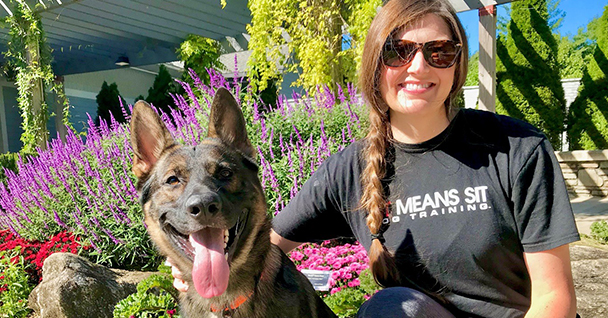Important Tips for Effective Dog Training: A Guide for Family Pet Owners
Reliable pet dog training is a diverse process that calls for a critical method tailored to both the family pet's personality and the owner's purposes. Comprehending how to browse these barriers can substantially enhance the training experience, inevitably transforming the relationship in between owner and pet.
Comprehending Canine Actions
Understanding pet actions is important for efficient training and cultivating a harmonious connection in between pooches and their proprietors. dog training. Dogs interact largely through body language, vocalizations, and actions, making it vital for proprietors to interpret these signals precisely.

Socializing plays a considerable function in pet habits; direct exposure to different environments, individuals, and various other pets can considerably influence a pet's personality. Variables such as breed features and specific temperament need to assist training methods, as some breeds may have certain behavioral attributes that require tailored techniques. By understanding these aspects, proprietors can develop a supportive environment that motivates favorable behavior, leading to effective training results and a deeper bond with their pets.
Establishing Regular Commands
Effective interaction with your canine begins with establishing constant commands. This fundamental element of training is vital for cultivating understanding in between you and your pet dog. Consistency in the commands you use makes sure that your canine can dependably associate specific words or expressions with the desired habits.
When choosing commands, choose clear, unique words that are simple to differentiate and say from one an additional. Avoid utilizing similar-sounding commands that might confuse your pet. For instance, utilizing "sit" and "stay" is proper, yet "sit" and "hit" might cause misunderstandings.
Furthermore, maintain the same tone and volume for every command. Pet dogs are delicate to singing signs, so varying your tone can develop confusion.
It is similarly important to make sure that all member of the family get on the exact same page concerning the commands used. A united front in command usage will avoid mixed signals and enhance the discovering procedure.
Positive Support Methods
The power of positive support in pet dog training exists in its capacity to encourage wanted behaviors through incentives and appreciation. This method is grounded in the principle that behaviors complied with by positive outcomes are most likely to be repeated. By including positive support into your training regimen, you can properly form your pet dog's behavior in a useful manner.
To implement positive reinforcement, it's vital to identify what encourages your canine, whether it be treats, toys, or spoken praise. When your canine performs a preferred activity, such as sitting on command, instantly reward them with a treat or affection. This organization between the command and the favorable end result enhances their understanding.
It's crucial to timing the rewards appropriately; delivering the support within seconds of the preferred actions assists your canine make the connection (dog training). Furthermore, uniformity is crucial-- make certain that all relative utilize the same commands and benefit systems to stay clear of complication

Slowly, you can reduce the regularity of treats as your canine finds out the actions, transitioning to commend or periodic incentives. This technique not just fosters a strong bond between you and your pet yet additionally advertises a positive discovering atmosphere, making educating an enjoyable experience for both.
Socialization and Communication
Constantly revealing your pet to a range of environments, individuals, and various other animals is vital for their social growth. Socialization should start early, preferably throughout the important home window of 3 to 14 weeks, when young puppies are most responsive to brand-new experiences. Older canines can likewise benefit from ongoing socialization initiatives.
Present your canine to different settings, such as parks, pet-friendly shops, and city locations. This direct exposure helps them adapt to numerous stimulations, lowering anxiousness and anxiety reactions. Motivate positive communications with various other pet dogs and people, ensuring that these experiences are secure and regulated to foster confidence.
Make use of structured playdates with well-mannered pets, go to my blog as this can enhance your pet's social skills and teach them appropriate behavior. Obedience classes and training sessions also supply outstanding opportunities for socialization, permitting your pet dog to interact with others in a monitored environment.
Screen your pet's body movement during communications, as this will assist you gauge their convenience level. Slowly increase direct exposure to even more challenging scenarios while ensuring that each experience is positive. A well-socialized pet dog is more likely to show well balanced habits, making them a pleasure to have in any type of setup.
Addressing Common Training Difficulties
Every canine proprietor will certainly experience training difficulties at some factor, regardless of their pet dog's age or socializing level. Determining typical concerns such as stubbornness, diversions, and terror can assist in creating efficient approaches for renovation.

Gradually introduce distractions as the pet dog becomes extra efficient in commands. Short, frequent training sessions are likewise effective in maintaining attention.
Terror can prevent a pet dog's discovering process. Progressive desensitization to the source of worry, coupled with positive support, can assist alleviate anxiety. Perseverance is vital; never force a pet right into a situation that triggers distress, as this may aggravate the problem.
Ultimately, understanding and addressing these usual obstacles with a structured approach will certainly foster an extra efficient training experience, reinforcing the bond between dog and proprietor while promoting reliable knowing.
Conclusion
In summary, effective dog training relies upon a thorough understanding of canine behavior, the facility of constant commands, and the application of positive support techniques. Socializing plays an important duty check it out in creating well-adjusted pet dogs, while dealing with usual training challenges needs perseverance and versatility. By executing these essential methods, pet owners can cultivate a strong bond with their canines and promote desirable actions, ultimately causing an unified relationship in between people and their canine friends.
Understanding canine actions is essential for efficient training and cultivating an unified connection between canines and their owners.Socializing plays a significant function in pet dog behavior; direct exposure to various atmospheres, individuals, and various other animals can considerably affect a pet's personality.The power of favorable reinforcement in dog training lies in its capability to motivate preferred habits with incentives and appreciation. By including favorable support into your training routine, you can properly form your More hints pet's actions in a constructive manner.
In recap, successful pet training relies on a comprehensive understanding of canine behavior, the establishment of regular commands, and the application of positive reinforcement methods.